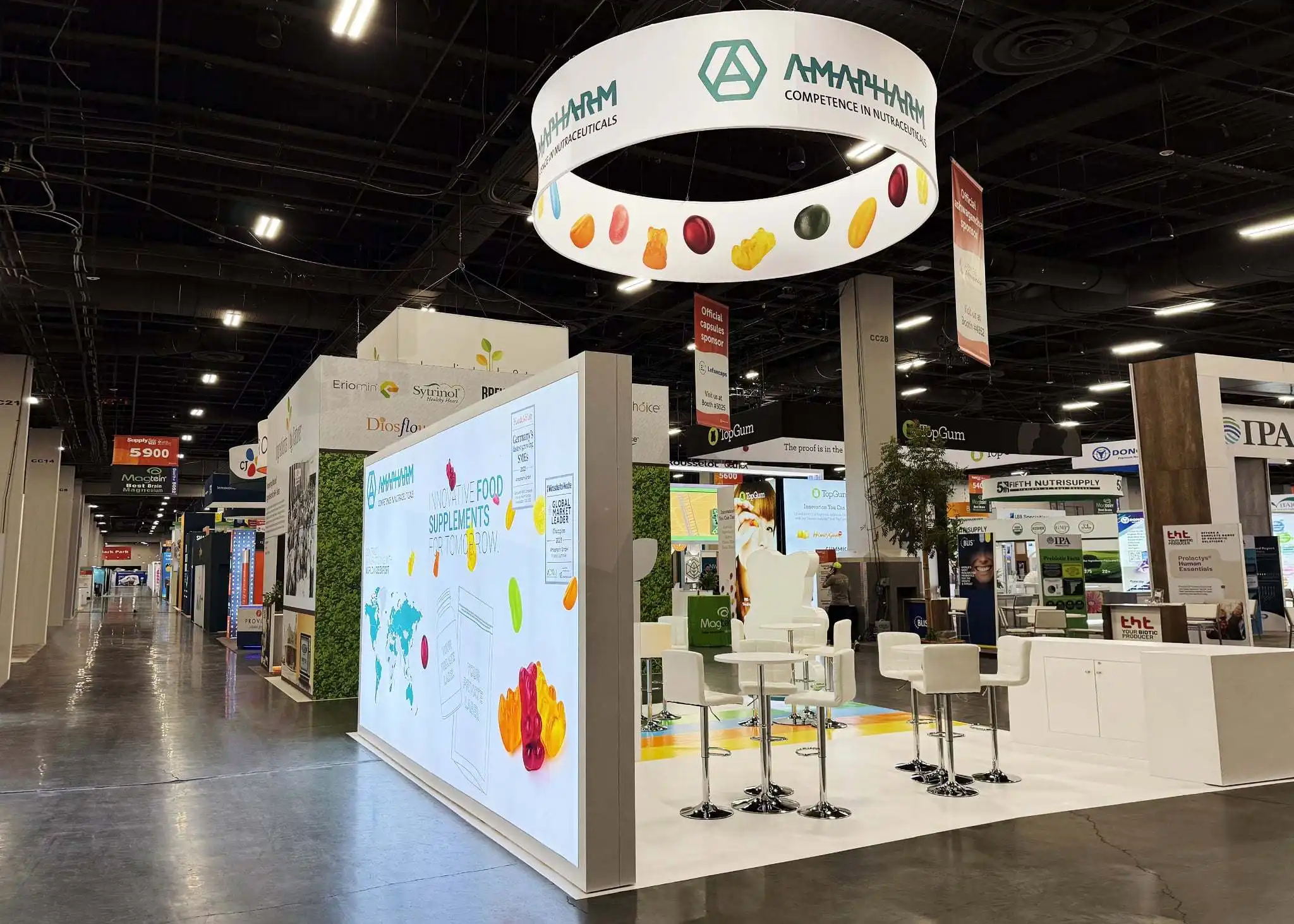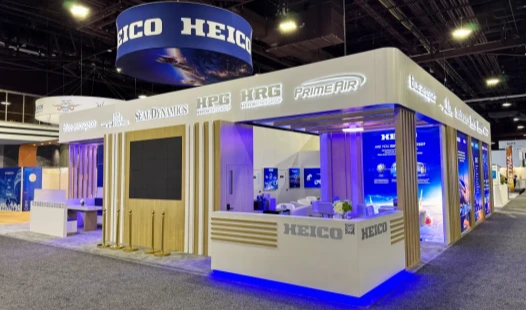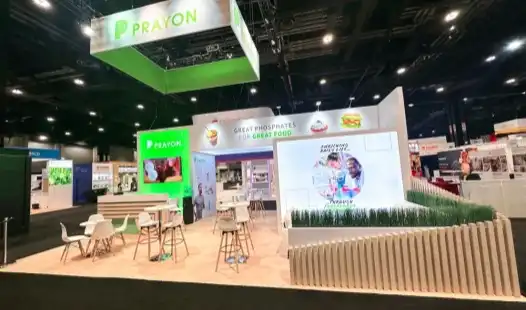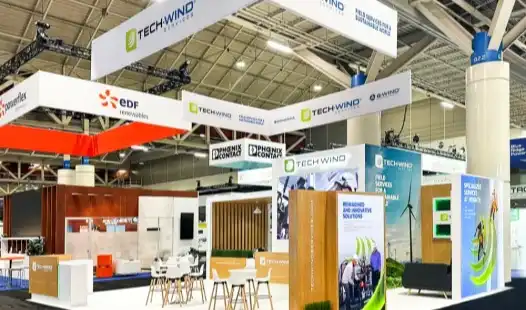Enhancing Product Demonstrations with AR at Trade Shows
AR technology has transformed how products are showcased at trade shows, offering a dynamic and interactive approach to demonstrations. Exhibitors can now present their products in ways previously unimaginable, allowing attendees to engage with virtual 3D models that showcase every feature and functionality.
Virtual Product Visualization
One of the most significant advantages of AR in trade shows is the ability to visualize products that are too large, complex, or impractical to physically bring to an event. For example, manufacturers of heavy machinery or industrial equipment can showcase full-scale virtual models, enabling visitors to inspect and explore the product from every angle as if it were physically present.
This capability reduces transportation and storage costs while overcoming spatial constraints, allowing exhibitors to display their entire product line efficiently. Virtual visualization also helps convey intricate details and functionalities that may be difficult to demonstrate with physical prototypes, enhancing attendee understanding and engagement.
Interactive Product Customization
AR empowers attendees to personalize and customize products in real-time, offering an experience traditional displays cannot replicate. Visitors can use AR-enabled devices to change colors, add features, modify specifications, or test different configurations instantly. This interactive approach not only increases engagement and dwell time but also provides exhibitors with valuable insights into visitor preferences, helping refine products and marketing strategies.
Personalized interactions make the booth experience more memorable and relevant, as attendees can see their ideas come to life virtually. By integrating customization through AR, exhibitors create a deeper connection with visitors and foster meaningful discussions that may lead to stronger sales opportunities.
Immersive Training and Education
Trade shows are also platforms for education and training, and AR enhances this by creating immersive, hands-on learning experiences. Exhibitors can develop AR-powered tutorials that guide attendees through product operations, maintenance procedures, or complex workflows in an interactive and visually engaging way. This approach allows participants to understand intricate processes more easily compared to static demonstrations or printed materials.
Immersive training via AR not only improves knowledge retention but also positions the brand as innovative and forward-thinking. By incorporating educational experiences into the booth, exhibitors can engage visitors more meaningfully, provide added value, and leave a lasting impression that extends beyond simple product demonstrations.
Creating Engaging Booth Experiences with Augmented Reality
AR technology has opened up new avenues for creating captivating booth experiences that draw attendees and leave lasting impressions. By integrating AR into their booth design and activities, exhibitors can stand out in the crowded trade show environment and provide unique, memorable experiences for visitors.
Gamification of Booth Activities
AR technology allows exhibitors to design interactive games and challenges that seamlessly blend with the booth experience, creating a fun and engaging atmosphere. Gamified elements, such as scavenger hunts, quizzes, or virtual challenges, encourage attendees to explore the booth thoroughly and interact with different products or displays.
These activities increase dwell time and make learning about products or services more enjoyable. For example, an AR scavenger hunt could guide visitors through a product journey, revealing key features at each stage, while a virtual game could entertain and educate simultaneously. Gamification not only draws visitors in but also facilitates meaningful conversations with booth staff.
Virtual Brand Ambassadors
AR enables the creation of virtual brand ambassadors or digital product specialists that can interact with attendees in real-time at Trade Shows. These avatars can provide product information, answer common questions, or guide visitors through different areas of the booth. This ensures that even during busy periods, attendees have access to personalized guidance and information, enhancing their overall experience.
Virtual brand ambassadors also add a futuristic and innovative touch to the booth, reinforcing the company’s position as a technology-forward brand. By supplementing human staff with AR-powered digital assistants, exhibitors can improve engagement, streamline information delivery, and create a memorable and efficient booth experience.
Augmented Booth Design
AR can transform the physical booth space into a fully immersive and interactive brand environment. Attendees using AR-enabled devices can see extra layers of information, animations, or interactive elements overlaid on the physical structure, enhancing product storytelling and visitor engagement. This approach allows exhibitors to create dynamic, customizable environments that can change throughout the day or for different target audiences.
For instance, animations could demonstrate product functionality, or virtual signage could highlight promotions. By integrating AR into the booth’s design, companies can maximize the use of their physical space, make exhibits more engaging, and deliver a visually impressive and memorable experience that leaves a lasting impression on visitors.
Leveraging AR for Post-Show Engagement and Data Analytics
The benefits of AR in trade shows extend beyond the event itself, offering valuable opportunities for post-show engagement and data collection. By integrating AR into their overall trade show strategy, exhibitors can enhance their follow-up processes and gain deeper insights into attendee behavior and preferences.
Continued Product Exploration
AR applications allow attendees to continue exploring products even after Trade Shows have ended, keeping the brand top-of-mind. By providing AR-enabled content accessible via smartphones or tablets, exhibitors give potential customers the ability to interact with products virtually at their convenience.
This could include virtual catalogs that let users place products in their own spaces or interactive 3D models that reveal detailed specifications and functionalities. Such tools not only extend the trade show experience but also facilitate informed decision-making, allowing attendees to engage more deeply with the brand and its offerings, ultimately increasing the likelihood of post-show conversions and stronger long-term relationships.
Enhanced Follow-up Materials
Traditional follow-up methods like brochures, emails, or print catalogs can be greatly enhanced through AR features, making them more engaging and informative. For instance, a printed brochure could include AR markers that, when scanned, display interactive 3D product models, instructional videos, or live demonstrations on a smartphone or tablet.
This adds a dynamic layer to otherwise static materials, allowing potential customers to explore products in greater detail and interactively experience the brand. By integrating AR into follow-up communications, exhibitors increase the memorability of their outreach, provide additional value to attendees, and maintain ongoing engagement that can lead to higher conversion rates.
Data Collection and Analytics
AR applications generate valuable data on how attendees interact with products and booth experiences, offering insights that traditional methods cannot capture. Metrics such as dwell time, frequency of interactions, popular features, and user preferences can be tracked and analyzed to identify trends and optimize future strategies.
This data helps exhibitors understand which products resonate most, how visitors engage with different experiences, and what aspects drive interest or engagement. By leveraging these analytics, companies can refine product development, improve marketing campaigns, and design more effective booth experiences at future trade shows, ensuring continuous improvement and a stronger return on investment.
Conclusion
Augmented Reality is undeniably transforming the trade show landscape, offering innovative ways to showcase products, engage attendees, and gather valuable data. From enhancing product demonstrations to creating immersive booth experiences and extending engagement beyond the event, AR is proving to be a game-changer in the industry. As technology continues to evolve, we can expect even more creative and impactful applications of AR in trade shows, further blurring the lines between physical and digital experiences. Embracing these advancements will be crucial for exhibitors looking to stand out and maximize their trade show investments in an increasingly competitive marketplace.
At HR Exhibits, we understand the power of innovative technologies like AR in creating unforgettable trade show experiences. Our team of experts is ready to help you leverage these cutting-edge solutions to make your next trade show appearance truly spectacular. Whether you're looking to integrate AR into your booth design, create interactive product demonstrations, or develop post-show engagement strategies, we have the expertise and resources to bring your vision to life. Don't miss out on the opportunity to transform your trade show presence. Contact us today at info@hrexhibits.com to discuss how we can help you stay ahead of the curve and make a lasting impression on your audience.
FAQ
How far in advance should I start planning my trade show booth?
Ideally, you should begin planning 3-5 months before the event. This allows ample time for design, fabrication, and logistics. However, our team at HR Exhibits is flexible and can accommodate more urgent timelines when necessary.
What information do you need to start designing my booth?
To get started, we typically require your booth size, the name of the show you're attending, your design ideas or preferences, and your budget. This information helps us create a tailored proposal that meets your specific needs.
Do you offer storage solutions for booth materials between shows?
Yes, we provide convenient local storage options for your booth materials. This service ensures long-term support for your future events and eliminates the need for you to find storage space or transport materials between shows.
References
1. Smith, J. (2023). "The Impact of Augmented Reality on Trade Show Engagement". Journal of Exhibition Management, 45(2), 78-92.
2. Johnson, A. & Brown, T. (2022). "Augmented Reality in Trade Shows: A Case Study Analysis". International Journal of Event Management, 18(3), 201-215.
3. Lee, S. (2023). "Enhancing Visitor Experience through AR Technologies at Trade Shows". Tech Innovations in Marketing, 7(1), 45-60.
4. Garcia, M. et al. (2022). "The Future of Trade Shows: AR and Beyond". Exhibition World Magazine, 56(4), 32-40.
5. Wilson, R. (2023). "Measuring ROI of AR Implementations in Trade Show Environments". Journal of Marketing Analytics, 11(2), 156-170.




